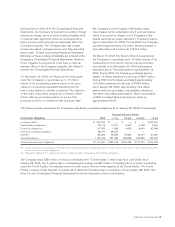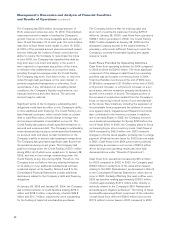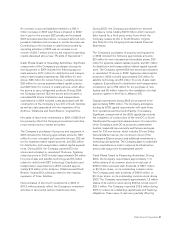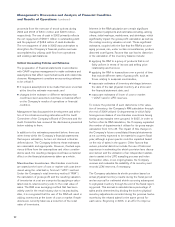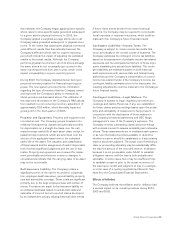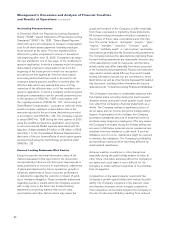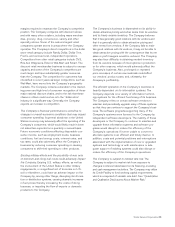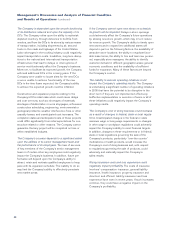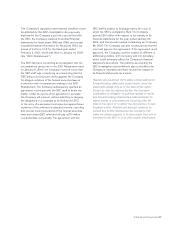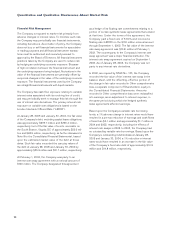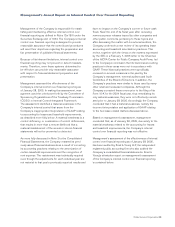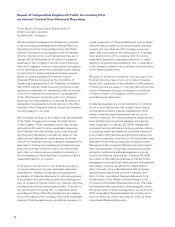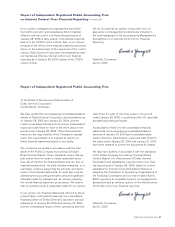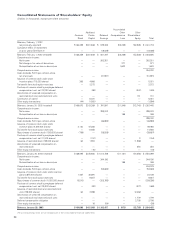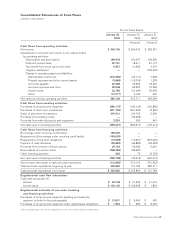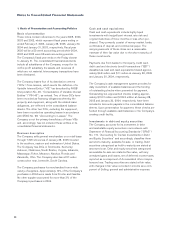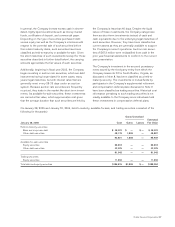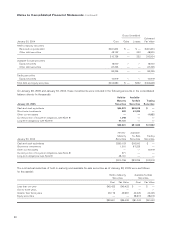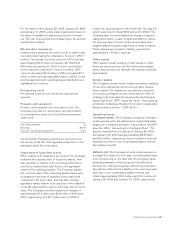Dollar General 2004 Annual Report Download - page 31
Download and view the complete annual report
Please find page 31 of the 2004 Dollar General annual report below. You can navigate through the pages in the report by either clicking on the pages listed below, or by using the keyword search tool below to find specific information within the annual report.Dollar General Corporation 29
Management’s Annual Report on Internal Control Over Financial Reporting
Management of the Company is responsible for estab-
lishing and maintaining effective internal control over
financial reporting as defined in Rules 13a-15(f) under the
Securities Exchange Act of 1934. The Company’s internal
control over financial reporting is designed to provide
reasonable assurance that the controls and procedures
will meet their objectives regarding the preparation and
fair presentation of published financial statements.
Because of its inherent limitations, internal control over
financial reporting may not prevent or detect misstate-
ments. Therefore, even those systems determined to
be effective can provide only reasonable assurance
with respect to financial statement preparation and
presentation.
Management assessed the effectiveness of the
Company’s internal control over financial reporting as
of January 28, 2005. In making this assessment, man-
agement used the criteria set forth by the Committee of
Sponsoring Organizations of the Treadway Commission
(COSO) in Internal Control-Integrated Framework.
The assessment identified a material weakness in the
Company’s internal control that arose from the
Company’s inappropriate interpretation of GAAP relating
to accounting for leases and leasehold improvements,
as described more fully below. A material weakness is a
control deficiency, or combination of control deficiencies,
that results in more than a remote likelihood that a
material misstatement of the annual or interim financial
statements will not be prevented or detected.
As more fully discussed in Note 2 to the Consolidated
Financial Statements, the Company restated its previ-
ously issued financial statements as a result of correcting
its accounting practices relating to the amortization of
certain leasehold improvements and the recognition of
rent expense. The restatement was technically required
even though the adjustments for each individual year are
not material to that year’s previously reported results and
have no impact on the Company’s current or future cash
flows. Near the end of its fiscal year, after reviewing
numerous press releases issued by other companies and
other public comments pertaining to these topics and
after discussing the matter with its external auditors, the
Company undertook a new review of its operating lease
accounting and leasehold amortization practices. This
review, together with the views on the matters expressed
by the SEC in a February 7, 2005 letter to the Chairman
of the AICPA Center for Public Company Audit Firms, led
to the Company’s conclusion that its historical accounting
practices in these areas were not in accordance with
GAAP. These historical practices were specifically
reviewed on several occasions in the past by the
Company’s management, external auditors and Audit
Committee of the Board of Directors. In addition, the
Company’s practices were similar to those used by many
other retail and restaurant companies. Although the
Company corrected these errors prior to the filing of its
Form 10-K for the 2004 fiscal year, thus remediating its
only material weakness, they were not effectively remedi-
ated prior to January 28, 2005. Accordingly, the Company
concluded that it had a material weakness, namely the
incorrect interpretation and application of GAAP relating
to the two lease-related matters discussed above.
Based on management’s assessment, management
concluded that, as of January 28, 2005, due solely to the
material weakness related to the accounting for leases
and leasehold improvements, the Company’s internal
control over financial reporting was not effective.
Management’s assessment of the effectiveness of internal
control over financial reporting as of January 28, 2005,
has been audited by Ernst & Young LLP, the independent
registered public accounting firm who also audited the
Company’s consolidated financial statements. Ernst &
Young’s attestation report on management’s assessment
of the Company’s internal control over financial reporting
is contained below.


